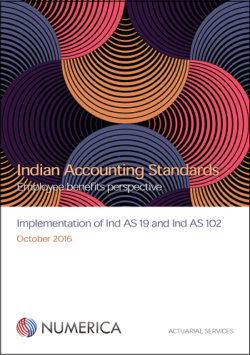
The amendment to Payment of Gratuity (PG) Act, 1972, has finally come into force with the notification in the Gazette of India on 29 March 2018. This amendment has led to an increase in gratuity limit to Rs 20 lakhs, from Rs 10 lakhs earlier. The timing of this notification means that companies will need to allow for the increase in the limit in their actuarial valuation under AS 15 or Ind AS 19 for Financial Year 2017-18.
How the development unfolded?
The increase in gratuity limit has been in news for a last couple of years. The amendment has gone through a number of approvals and interim delays. Here is a brief history of how this amendment came about:
- In 2016, the gratuity limit was increased to Rs 20 lakhs for the employees of the government via the Seventh Pay Commission. This amendment was limited to central government employees only. It was not an amendment to the PG Act, therefore, the gratuity limit stayed at Rs 10 lakh for private sector employees.
- In early September 2017, the amendment to PG Act was approved by the cabinet, paving the way for the bill to be tabled in the Parliament.
- The Lok Sabha cleared the amendment bill on 15 March 2018.
- The bill was cleared by Rajya Sabha on 22 March 2018, thereby completing the Parliamentary approval process.
- The amendment was notified by publication in the Gazette of India on 29 March 2018, thereby bringing the amendment into force effective that date.
What the companies must do now?
Since the amendment has been made effective prior to the end of the current Financial Year, the companies affected must allow for increase in gratuity limit in their financial statements of FY 17-18. Companies need to speak with their actuaries and immediately arrange for the actuarial valuation under AS 15 or Ind AS 19, as the case may be, allows for the increase in limit to Rs 20 lakhs.
The timing of this amendment is such that most companies are already preparing their year-end financial statements. Therefore this amendment is likely to create significant strain on the year-end reporting process.
What will be the impact of increase in gratuity limit?
Firstly, it is important that the affected companies obtain the right advice. Given the timing, wrong advice could easily derail the reporting process. The increase in gratuity limit will create ‘past service cost’, which is usually reported as nil, unless there is a change in scheme rules. Companies must ensure that their actuaries calculate and disclose the past service cost element in their actuarial reports under both AS 15 and Ind AS 19. The impact of limit increase should not be routed through actuarial loss (in AS 15) or remeasurement (in Ind AS 19).
The amendment will mean that all companies will see their gratuity liabilities go up. The impact for most companies will be marginal, but companies offering high salaries and increments could see a considerable jump in gratuity liability. This is explained in more detail in another post. Also read this post, which describes the sensitivity of actuarial liability to an increase in gratuity limit.
Companies reporting under Ind AS 19 will be affected more by this amendment than those reporting under AS 15. This is because AS 15 allows a part of the past service cost (which remains un-vested) to be deferred to be recognised in future accounting periods. Ind AS 19 requires that the entire impact of amendment be recognised in the same accounting period in which the amendment has been made.
Link to the notification in the Gazette
Click here to view the notification related to increase in gratuity limit. It must be noted that future amendments related to changes in the amount of the limit can be made directly without the approval of the Parliament.
Refer to our main actuarial valuation topic page for more information related to actuarial valuation, methods and assumptions.
At Numerica, we are well placed to help companies struggling to deal with this increase in gratuity limit in time for their year-end reporting deadlines. For an extremely quick turnaround, get in touch with us.
Download our guide on transitioning to Ind AS 19 here:

